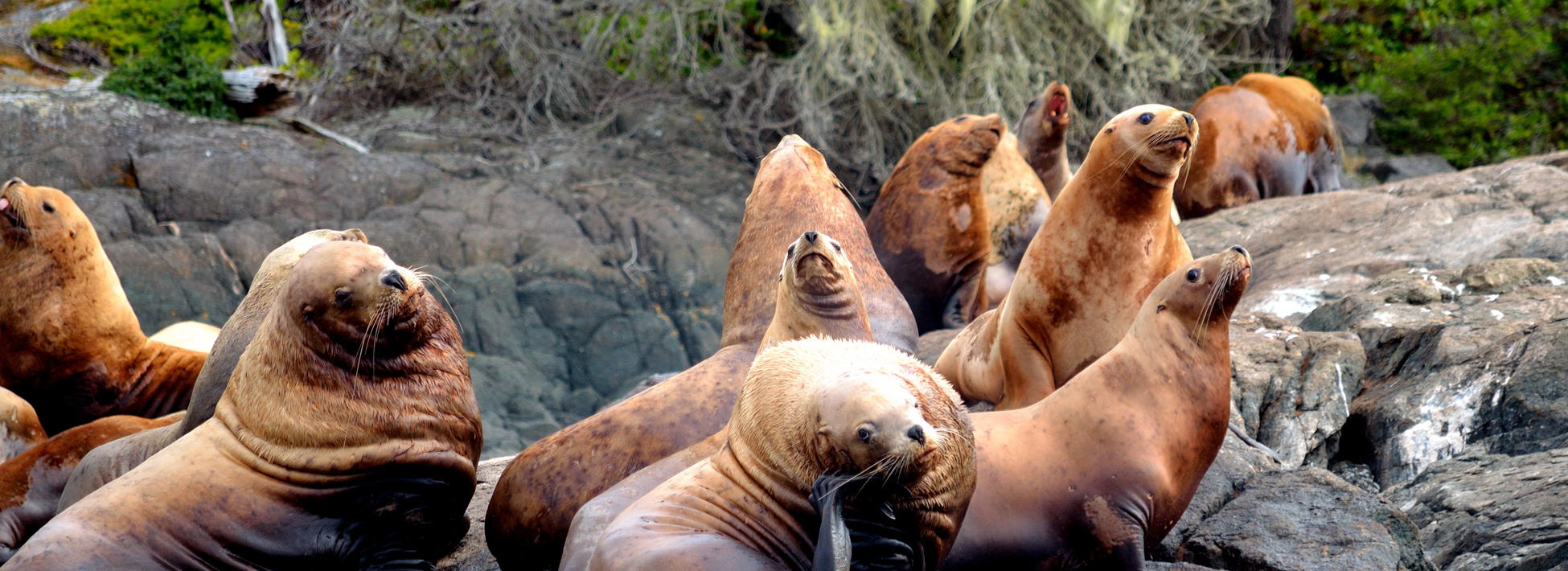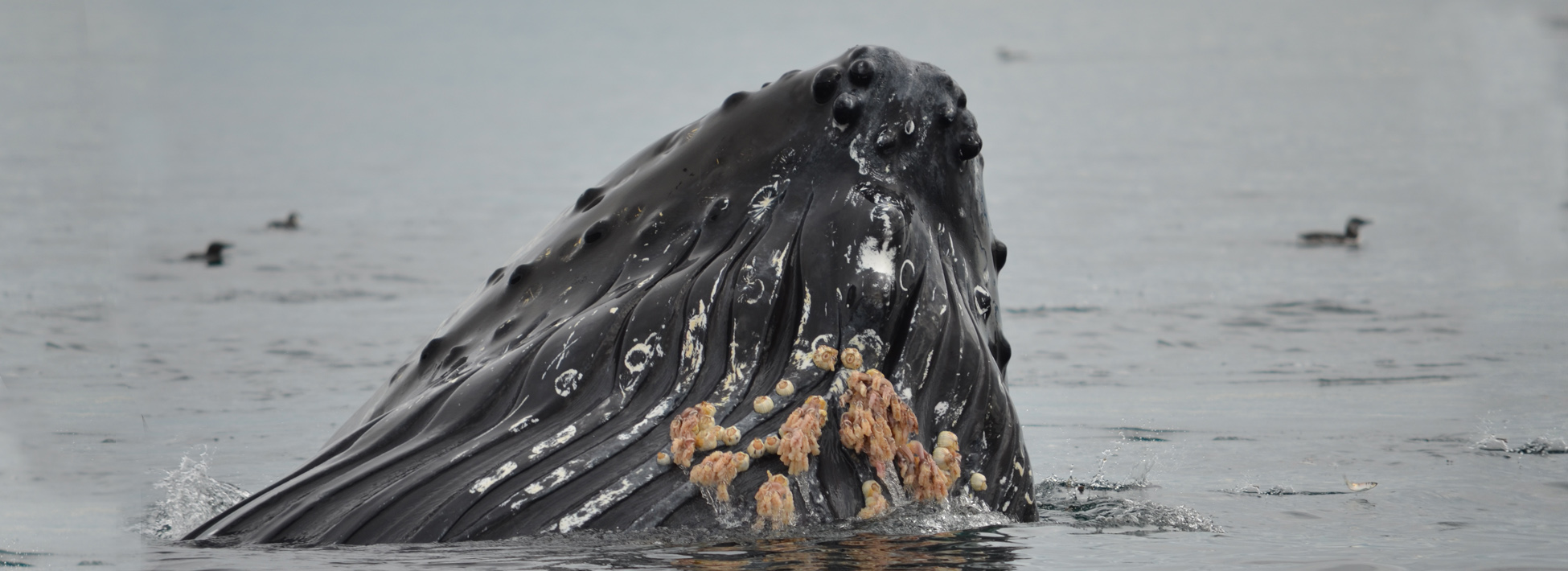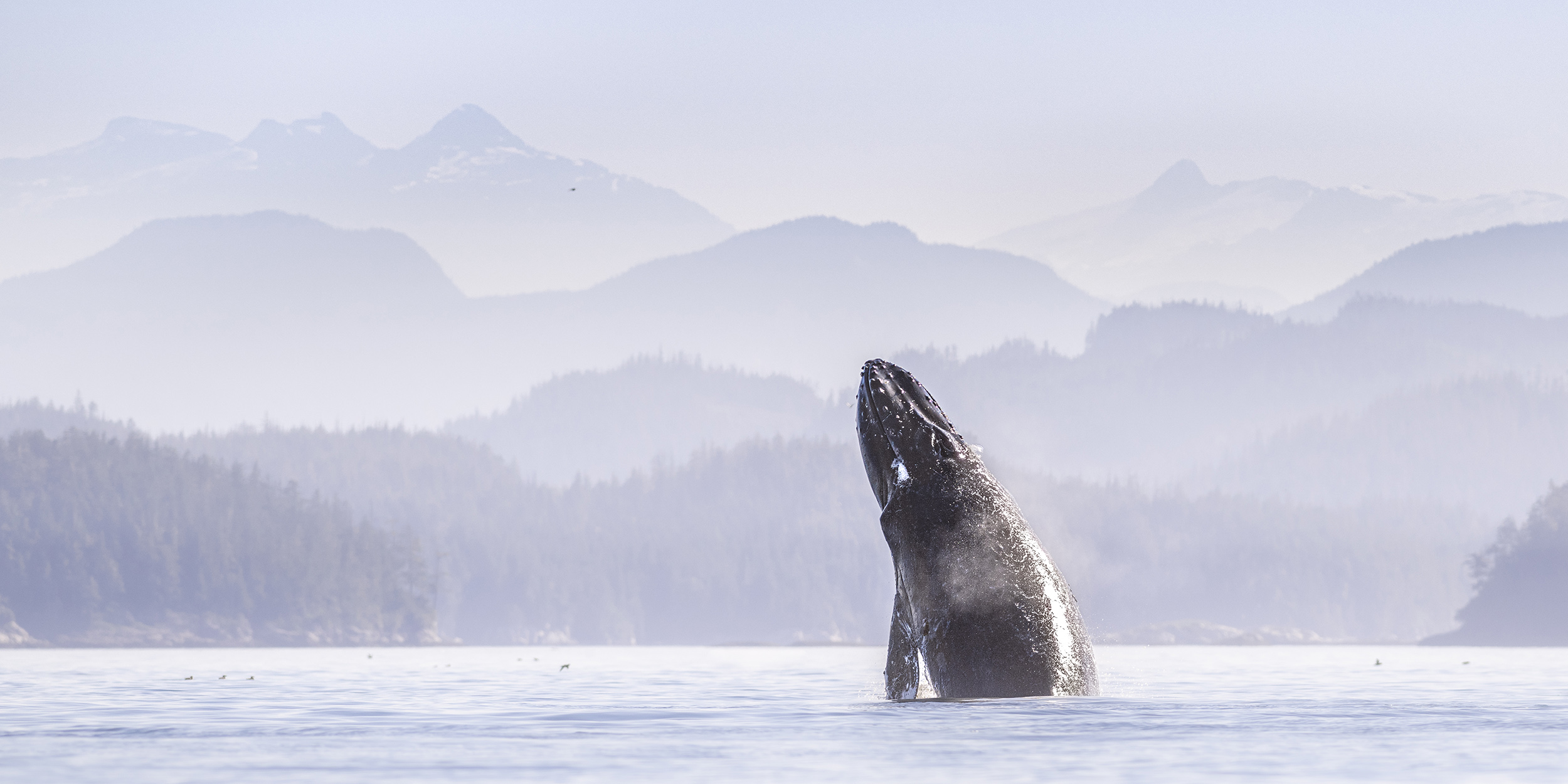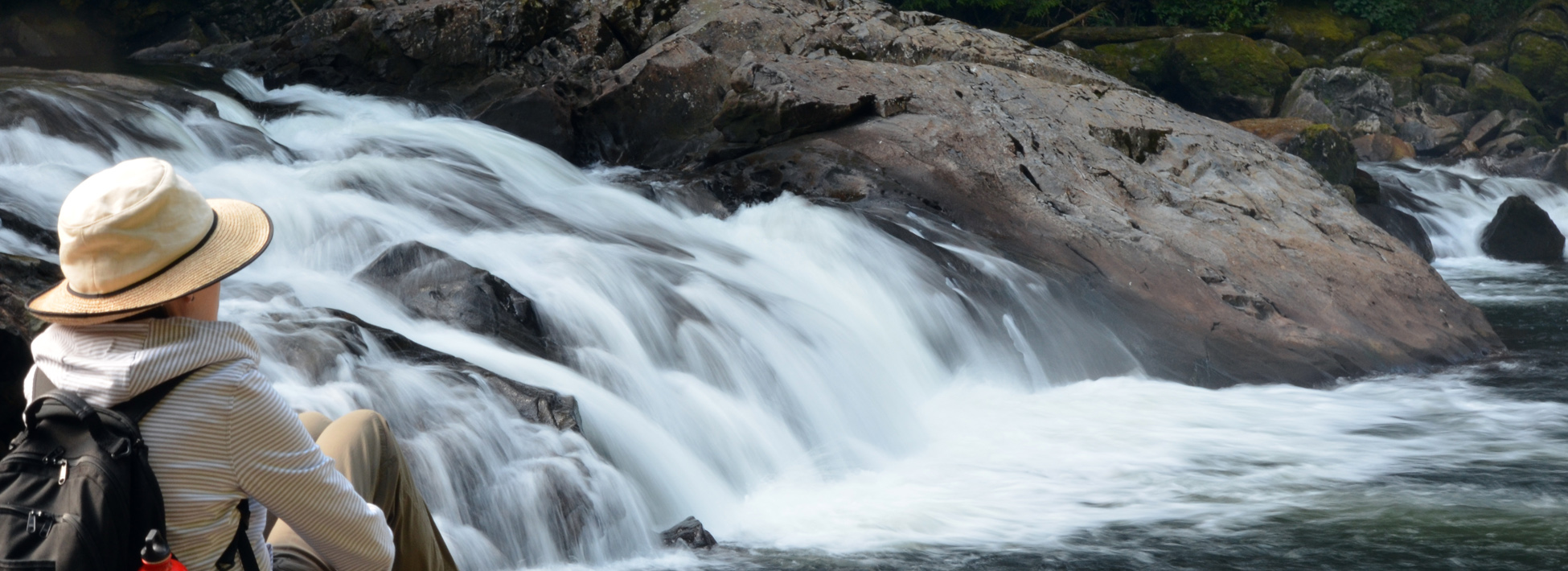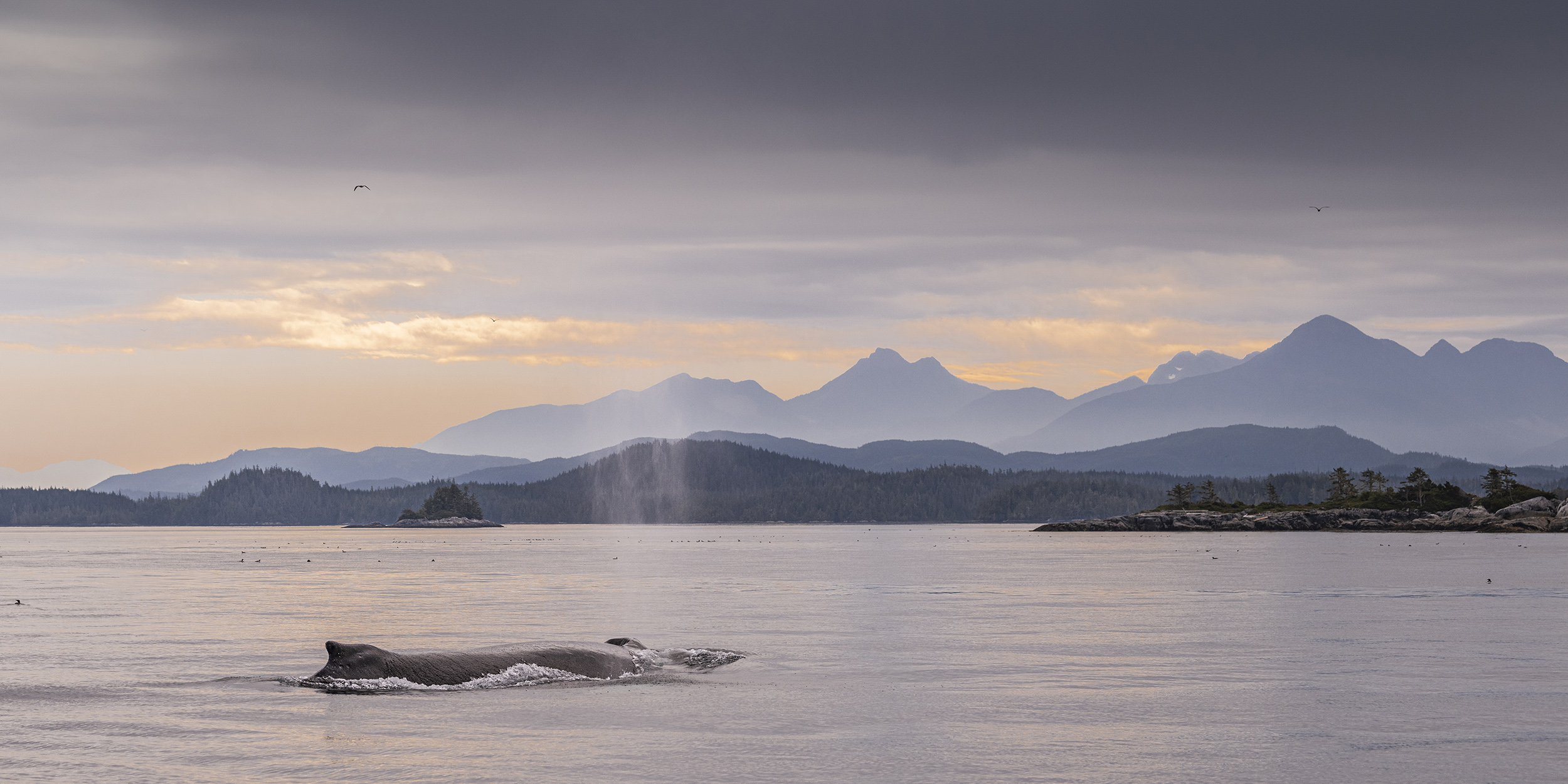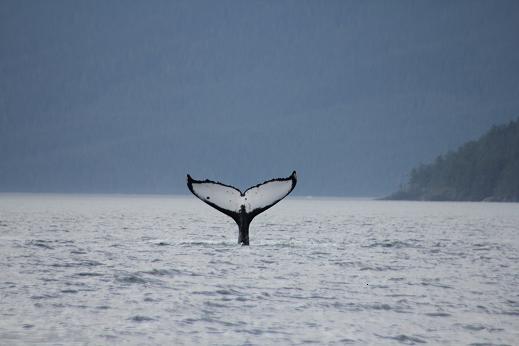Humpback whales are identified by the underside and trailing edge of their tail flukes; each one is different just like a fingerprint. In British Columbia humpbacks are given a letter as part of their identification to categorize their fluke based on color. X animals have mostly black tails with less than 20% white on their fluke, Y animals have a fluke that is 20-60% white, while Z animals have more than 60% of their fluke white. Humpback whales often show these tails, or ‘fluke’ while diving, making them ideal candidates for photo-identification projects. This photo is of a humpback that we frequently see on our whale watching tours, it is called ‘Guardian’.
Bald Eagles

Bald Eagles are frequently sighted in our area. At times they can be seen in large numbers. This is usually where food supplies are high. For example this could be in areas with high concentrations of baitfish or along the rivers in the fall when the salmon are spawning. They are not migratory, but do move around with the food supply. As mentioned earlier when the salmon are spawning we often see many along the rivers, while there will be fewer along the coastline. With little need for camouflage their white head and tail feathers can be spotted easily. The female is slightly larger and her white head extends down a bit farther onto the body, but it is subtle. It takes these birds 4.5 – 5 years to acquire this unique plumage. As juveniles they are a brown colour. With exceptional eyesight and the ability to view 270 degrees they are understandably often seen in high perches and in trees near points and passageways.
Visit our Blog